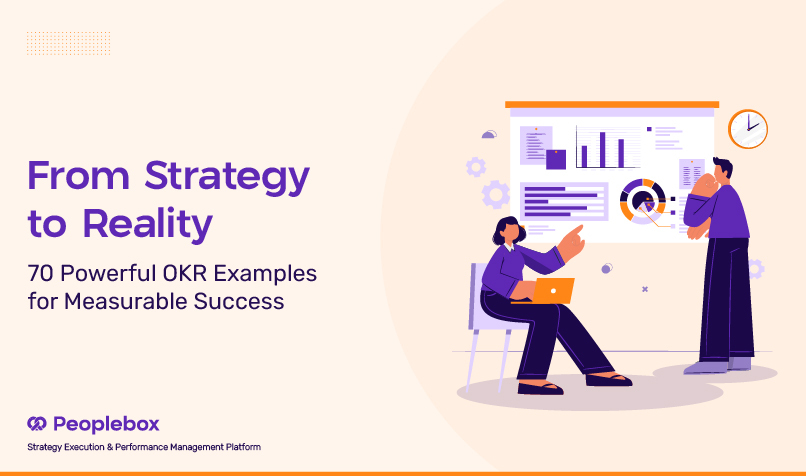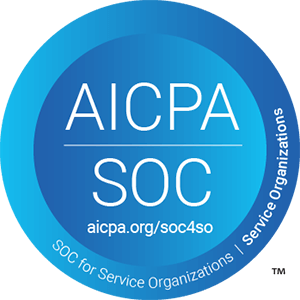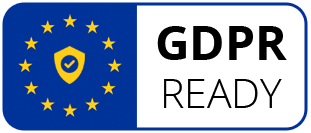Today, achieving organizational success requires more than just ambition and effort. It demands a strategic framework that aligns aspirations with actionable steps, fosters collaboration and accountability, and fuels continuous improvement. That’s where a proven framework like Objectives and Key Results (OKRs) comes into play.
In this comprehensive guide, we present 70 proven OKR examples to inspire and guide your organization towards excellence.
But before that, let’s look at the basics.

What are OKRs?
OKRs are more than just a trendy buzzword; they’re a powerful goal-setting framework that empowers organizations to achieve breakthrough performance. By replacing ambiguous aspirations with clear and measurable goals, OKRs provide a roadmap for focused action, shared purpose, and continuous improvement.
At its core, OKRs consist of two components: Objectives and Key Results. Objectives are ambitious, qualitative goals that define what an organization aims to achieve. Key Results, on the other hand, are specific, measurable milestones that indicate progress towards the attainment of the Objectives.
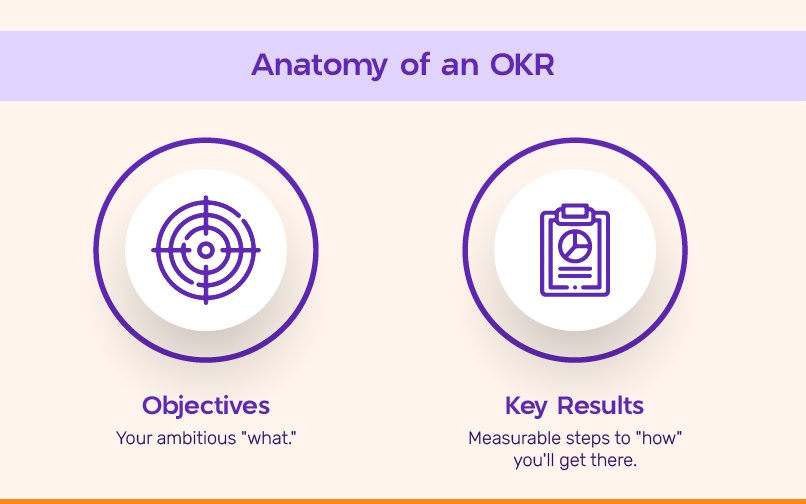
Why Choose OKRs for Success?
The benefits of implementing OKRs are multi-faceted and far-reaching:
Clarity and Focus: OKRs break down complex goals into concise, actionable objectives and quantifiable key results. This eliminates ambiguity and ensures everyone is on the same page, driving laser-focused execution.
Alignment and Engagement: OKRs cascaded from company-wide objectives to individual teams foster a sense of shared purpose and ownership. Team members feel connected to the bigger picture, not just isolated cogs in the machine.

Align Goals like a pro with Peoplebox
Agility and Adaptability: Unlike rigid, static goals, OKRs are designed for dynamic progress. Regular check-ins and adjustments allow teams to pivot and adapt to changing circumstances, seizing new opportunities and overcoming unforeseen challenges.
Transparency and Accountability: OKRs create a culture of openness and shared accountability. Regular progress reviews and transparent goal-sharing keep everyone motivated and ensure everyone is pulling their weight.
With Peoplebox, you can guarantee that each individual goal is intricately linked to the overarching organizational objective. This fosters transparency and accountability, as everyone gains insight into how their performance directly impacts the entire organization.

Say Hello to Stress-Free Goal-Setting with Peoplebox
Stretch and Innovation: OKRs encourage ambitious objectives, pushing teams beyond their comfort zones and sparking innovation. By aiming for the seemingly impossible, teams often achieve remarkable results.
We understand that there are other frameworks of goal setting. However, OKRs have gained popularity mainly due to the multiple benefits they provide. Here’s a quick look at how OKRs differ from traditional goal-setting frameworks.
| Aspect | OKRs (Objectives and Key Results) | Traditional Goal Setting |
| Nature of Goals | Objectives are qualitative, ambitious, and focused on outcomes. | Goals are often specific, measurable, achievable, relevant, and time-bound (SMART). |
| Measurability | Key Results provide specific, measurable indicators of success. | Emphasis on measurable outcomes, but may lack the precision of Key Results. |
| Flexibility and Adaptability | Allows for flexibility and adaptability, encouraging continuous reassessment and adjustment. | Can be rigid, making it challenging to adapt to changing circumstances. |
| Transparency | Emphasizes transparency by making goals visible and accessible to the entire organization. | Transparency may vary; goals may not always be clearly communicated to all levels. |
| Alignment | Promotes alignment by ensuring that individual and team objectives contribute to overarching organizational goals. | Alignment may be limited, and individual goals may not always align with broader organizational objectives. |
| Focus on Continuous Improvement | Encourages a culture of continuous improvement through regular reflection and adaptation. | May not inherently promote ongoing evaluation and improvement. |
| Frequency of Review | Typically involves regular check-ins and reviews, often quarterly or annually. | Annual or periodic performance reviews may be the primary assessment point. |
| Employee Engagement | Enhances employee engagement by providing a sense of purpose and contributing to a shared vision. | Engagement may depend on the effectiveness of communication and relevance of goals. |
| Ease of Cascading Goals | Facilitates the cascading of goals from organizational to individual levels. | Cascading goals can be challenging, leading to misalignment at different organizational levels. |
| Adaptability to Change | Well-suited for dynamic environments, allowing for quick adaptation to changes in priorities. | May struggle to adapt to rapidly changing business landscapes. |
Before we talk more about OKRs, it’s important to acknowledge that embracing something new can be challenging, especially if you don’t know where to start. While this blog post will help you, we strongly recommend checking out our guide on driving OKR adoption throughout your organization.
What Constitutes a Good OKR?
Crafting effective OKRs is like building a bridge – it requires a sturdy foundation, clear direction, and robust supporting structures to reach the desired destination. So what makes a good OKR? We tell you.
But before that, here’s what an organization’s OKR structure looks like:
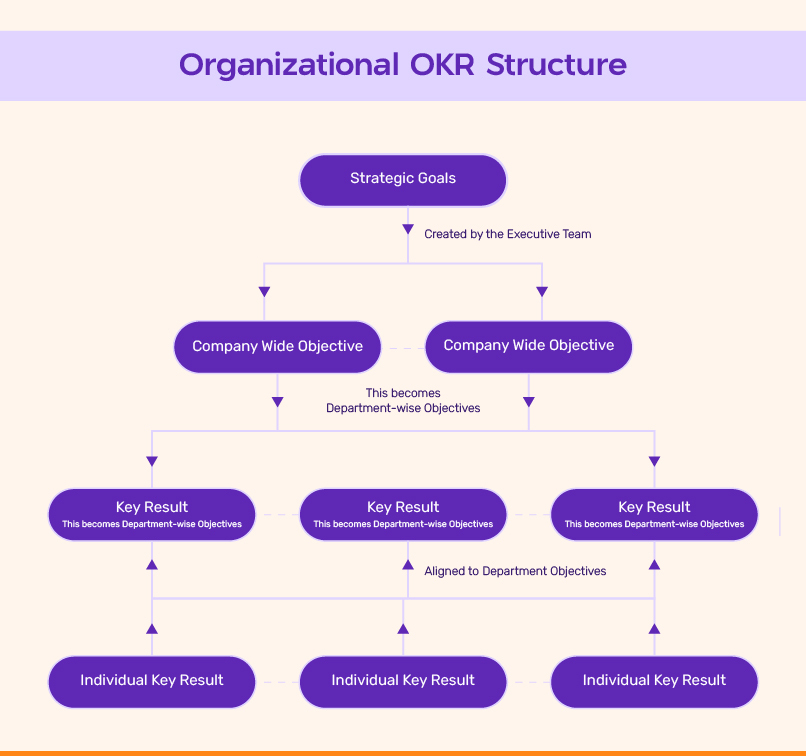
Elements of a Good OKR
Clarity and Ambition in Objectives:
Good Objective: Increase customer satisfaction through enhanced product features and user experience.
Bad Objective: Improve product features.
A good objective is clear, ambitious, and provides a sense of direction. It outlines the desired outcome without being too vague.
Measurability and Precision in Key Results:
Good Key Result: Achieve a Net Promoter Score (NPS) of 75 by the end of the quarter.
Bad Key Result: Gather customer feedback.
Key results should be specific, measurable, and directly tied to the objective. They serve as the quantifiable milestones that indicate progress.
Alignment with Organizational Goals:
Good Alignment: Align individual OKRs with the overarching organizational goals of revenue growth.
Poor Alignment: Set individual goals without considering organizational priorities.
A good OKR is aligned with the broader strategic objectives of the organization, ensuring that every effort contributes to the company’s success.
Challenging, Yet Attainable:
Good Challenge: Increase quarterly sales by 20%.
Overly Ambitious: Achieve a 100% increase in quarterly sales.
Objectives and key results should present a challenge while remaining realistically achievable. Unrealistic goals can lead to frustration and demotivation.
Good OKR Example:
Objective: Improve Employee Skill Development and Engagement
Key Results:
- Achieve an 80% completion rate in company-wide training programs.
This key result is specific and measurable, focusing on the percentage of employees completing training programs, directly contributing to skill development.
- Increase participation in monthly skill-sharing sessions by 50%.
This key result emphasizes engagement and collaboration, measurable by the percentage increase in employees attending skill-sharing sessions.
- Attain a 15% improvement in employee satisfaction scores related to professional development.
This key result ties directly to the objective by measuring the impact on employee satisfaction, ensuring that the improvement in skills positively influences overall job satisfaction.
Bad OKR Example:
Objective: Conduct Training Programs
Key Results:
- Organize three training sessions per month.
While specific, this key result lacks a measurable impact on the success of the training programs or their contribution to employee development.
- Distribute training materials to all employees.
This key result focuses on a task rather than a measurable outcome, making it difficult to assess the effectiveness or engagement of the training.
- Invite external trainers for two workshops.
While specific, this key result doesn’t provide a clear link to the objective’s impact on employee skill development and engagement.While setting the objectives can be somewhat easy, crafting effective key results can be tricky. But you don’t have to worry. Check out our guide on writing better Key Results With OKR Milestones.
Why Should You Care About OKR Examples?
We’ve established that OKRs are important for the success of an organization. However, the challenge lies in tailoring these objectives to the unique needs and functions of diverse teams within an organization.
Diverse Team Goals
Different teams within an organization often have distinct objectives and priorities. From sales and marketing to product development and customer support, each team contributes uniquely to the overall success of the company.
Varying Key Metrics
Key performance indicators (KPIs) and success metrics differ across teams. Sales teams may focus on revenue targets, while customer support teams prioritize customer satisfaction. Setting effective OKRs requires a nuanced understanding of these variations.
Interconnectedness of Goals
While individual teams have specific goals, their objectives are interconnected. For instance, marketing efforts may influence sales, and product development may impact customer satisfaction. Harmonizing these objectives ensures a cohesive and aligned organizational strategy.
Hence, to make it easier for you to craft effective OKRs, we are sharing 70 sample OKRs you can leverage readily. These examples will be your blueprint for crafting powerful, team-specific OKRs that propel your organization towards unprecedented heights.
Pssst! Looking to set OKRs for your startup? Download our quick guide today!

OKR Examples Across Teams for Organizational Success
10 Objectives and Key Results Examples for Marketing Teams
Marketing teams play a crucial role in fueling organizational growth and brand awareness. But amidst the ever-evolving digital landscape, crafting impactful OKRs can be a complex task. To inspire your marketing game, here are 10 diverse objectives and key results examples for Marketing teams:
- Objective: Enhance brand recognition and visibility.
- Key Result 1: Increase social media followers by 20%.
- Key Result 2: Boost website traffic from organic search by 15%.
- Key Result 3: Secure feature articles in 5 industry-relevant publications.
- Objective: Generate high-quality leads for the sales team.
- Key Result 1: Increase marketing qualified leads (MQLs) by 25%.
- Key Result 2: Improve lead conversion rate by 20% through targeted campaigns.
- Key Result 3: Achieve a 30% increase in webinar sign-ups.
- Objective: Optimize the conversion process and increase customer acquisition.
- Key Result 1: Achieve a 30% improvement in the conversion rate of website visitors to leads through A/B testing.
- Key Result 2: Reduce bounce rate by 15% through website optimization.
- Key Result 3: Increase click-through rate (CTR) on email campaigns by 25%.
- Objective: Foster long-term customer relationships and loyalty.
- Key Result 1: Reduce customer churn rate by 20% through personalized email marketing.
- Key Result 2: Increase customer satisfaction scores by 15% through proactive customer support.
- Key Result 3: Launch a customer loyalty program with 30% customer participation.
- Objective: Enter new markets and expand the customer base.
- Key Result 1: Establish partnerships with at least 3 new industry influencers or organizations.
- Key Result 2: Increase brand mentions in industry-specific forums and communities by 25%.
- Key Result 3: Expand social media presence to new platforms with a 20% increase in followers.
- Objective: Create compelling and engaging content for the target audience.
- Key Result 1: Increase average time spent on the blog by 40%.
- Key Result 2: Achieve a 25% rise in email open rates through impactful content strategies.
- Key Result 3: Generate 50% more shares and comments on social media content.
- Objective: Maximize the return on marketing investments.
- Key Result 1: Attain a 15% increase in marketing-generated revenue through efficient budget allocation.
- Key Result 2: Reduce customer acquisition cost (CAC) by 10% through optimized campaigns.
- Key Result 3: Increase marketing-qualified opportunities (MQOs) by 20%.
- Objective: Establish the brand as a thought leader in the industry.
- Key Result 1: Secure speaking opportunities at 3 major industry events or conferences.
- Key Result 2: Publish 10 thought leadership articles in reputable industry publications.
- Key Result 3: Increase social media engagement by 30% through thought-provoking content.
- Objective: Deliver exceptional customer experiences.
- Key Result 1: Achieve a 20% increase in customer satisfaction scores through improved customer support.
- Key Result 2: Reduce average resolution time for customer queries by 25%.
- Key Result 3: Implement personalized customer feedback surveys with a 40% response rate.
- Objective: Leverage technology for enhanced marketing operations.
- Key Result 1: Implement a new marketing automation platform.
- Key Result 2: Achieve a 30% increase in marketing process efficiency and productivity.
- Key Result 3: Integrate customer relationship management (CRM) system with marketing platforms for seamless data flow.
10 Sales Team OKR Examples
Sales teams are the engine that drives revenue and keeps the business humming. But optimizing their performance requires clearly defined goals and measurable progress. Here are 10 impactful OKR examples to inspire your sales team’s journey to success:
- Objective: Achieve a 20% growth in sales revenue.
- Key Result 1: Secure 30% more high-value enterprise clients.
- Key Result 2: Increase average deal size by 15% through upselling and cross-selling.
- Key Result 3: Expand sales pipeline by 25% through targeted lead generation efforts.
- Objective: Improve sales team efficiency and productivity.
- Key Result 1: Reduce average sales cycle length by 20% through streamlined processes.
- Key Result 2: Increase daily prospecting activities by 30%.
- Key Result 3: Achieve a 25% improvement in the conversion rate of leads to opportunities.
- Objective: Capture a larger share of the target market.
- Key Result 1: Increase market penetration in a specific industry segment by 15%.
- Key Result 2: Secure partnerships with 3 key industry influencers or organizations.
- Key Result 3: Launch targeted campaigns to gain 10% more market share in a specific geographic region.
- Objective: Foster long-term customer relationships and loyalty.
- Key Result 1: Reduce customer churn rate by 20% through proactive account management.
- Key Result 2: Increase customer satisfaction scores by 15% through personalized follow-up.
- Key Result 3: Launch a customer loyalty program with 30% customer participation.
- Objective: Equip the sales team with advanced skills and knowledge.
- Key Result 1: Conduct monthly sales training workshops with 100% team participation.
- Key Result 2: Achieve a 20% increase in the average deal size after implementing advanced negotiation training.
- Key Result 3: Enhance product knowledge proficiency with a 25% increase in assessment scores.
- Objective: Improve the efficiency of the sales funnel.
- Key Result 1: Increase the lead-to-opportunity conversion rate by 25% through targeted lead nurturing.
- Key Result 2: Achieve a 30% increase in the number of qualified leads entering the sales funnel.
- Key Result 3: Reduce the percentage of lost opportunities by 20% through improved follow-up strategies.
- Objective: Foster better collaboration and alignment between sales and marketing teams.
- Key Result 1: Increase the number of marketing qualified leads (MQLs) accepted by sales by 20%.
- Key Result 2: Conduct monthly joint strategy meetings with marketing to align on target audience and messaging.
- Key Result 3: Achieve a 15% increase in the conversion rate of sales-accepted leads to opportunities.
- Objective: Acquire new customers and expand the client online portfolio.
- Key Result 1: Increase the number of new customer acquisitions by 25%.
- Key Result 2: Secure contracts with 3 key accounts in a new industry segment.
- Key Result 3: Expand sales outreach to untapped geographic regions with a 20% increase in leads.
- Objective: Enhance the precision of sales forecasts.
- Key Result 1: Achieve a 20% reduction in forecasting errors through improved data analysis.
- Key Result 2: Increase the accuracy of quarterly sales predictions by 25%.
- Key Result 3: Implement a new sales forecasting tool to improve accuracy and reliability.
- Objective: Deliver exceptional customer experiences throughout the sales process
- Key Result 1: Achieve a 20% increase in customer satisfaction scores through personalized interactions.
- Key Result 2: Reduce average response time to customer inquiries by 30%.
- Key Result 3: Implement a customer feedback system with a 40% response rate to gather insights for improvement.
10 Sample OKRs for Product Teams
Product development teams hold the magic wand of innovation, crafting solutions that drive customer delight and business growth. But translating ambition into tangible realities requires clear goals and measurable progress. Let’s unlock the potential of your product development team with these 10 inspiring OKR examples:
- Objective: Successfully launch a new product in the market.
- Key Result 1: Complete product development and testing within the set timeline.
- Key Result 2: Achieve a 95% customer satisfaction rate in beta testing.
- Key Result 3: Secure 1000 pre-orders before the official launch date.
- Objective: Improve the usability and user experience of the product.
- Key Result 1: Increase the Net Promoter Score (NPS) by 20 points.
- Key Result 2: Reduce the average onboarding time for new users by 30%.
- Key Result 3: Achieve a 25% decrease in customer support tickets related to usability issues.
- Objective: Introduce innovative features to the existing product.
- Key Result 1: Launch 3 new features based on customer feedback and market trends.
- Key Result 2: Increase user engagement with the product by 25% through new feature adoption.
- Key Result 3: Achieve a 20% increase in customer satisfaction scores related to new features.
- Objective: Enhance the overall performance and reliability of the product.
- Key Result 1: Reduce product loading time by 40% through performance optimization.
- Key Result 2: Achieve a 30% decrease in product downtime or errors.
- Key Result 3: Increase the product’s scalability to handle 50% more users without performance degradation.
- Objective: Optimize the product development lifecycle for efficiency.
- Key Result 1: Reduce the average time to bring a new feature to market by 25%.
- Key Result 2: Achieve a 20% increase in the number of successful product releases per quarter.
- Key Result 3: Implement an agile development methodology with 100% team adoption.
- Objective: Foster better collaboration between product development and other departments.
- Key Result 1: Conduct monthly cross-functional workshops with 100% participation.
- Key Result 2: Achieve a 30% increase in the number of successful cross-departmental projects.
- Key Result 3: Implement a seamless communication platform to facilitate collaboration and information sharing.
- Objective: Ensure that the product complies with all relevant regulations and standards.
- Key Result 1: Obtain all necessary certifications and approvals before the product launch.
- Key Result 2: Conduct a comprehensive compliance audit with zero major findings.
- Key Result 3: Implement a robust process for ongoing compliance monitoring and reporting.
- Objective: Strengthen the security features of the product.
- Key Result 1: Conduct a thorough security audit with zero critical vulnerabilities identified.
- Key Result 2: Achieve a 30% increase in customer trust related to product security.
- Key Result 3: Implement multi-factor authentication for all user accounts.
- Objective: Enhance the quality assurance processes for the product.
- Key Result 1: Achieve a 20% reduction in the number of post-release defects.
- Key Result 2: Increase test coverage by 30% through automated testing implementation.
- Key Result 3: Reduce the average time to resolve product issues reported by customers by 40%.
- Objective: Gather valuable customer feedback and insights for product improvement.
- Key Result 1: Implement a customer feedback system with a 40% response rate.
- Key Result 2: Conduct quarterly user feedback sessions with 100% customer representation.
- Key Result 3: Achieve a 25% increase in the number of customer-driven product enhancements.
Want more? We talk more about using OKRs in product management in our blog post. Give it a read.
10 HR and Employee Development OKR Examples
Happy and engaged employees are the bedrock of organizational success. HR and employee development teams play a crucial role in fostering a thriving environment that unlocks potential and propels growth. Let’s delve into 10 inspiring OKR examples to guide your HR and employee development initiatives:
- Objective: Increase employee engagement and satisfaction.
- Key Result 1: Achieve a 15% increase in the employee Net Promoter Score (eNPS).
- Key Result 2: Conduct quarterly employee engagement surveys with a 90% participation rate.
- Key Result 3: Implement at least 3 new employee engagement initiatives based on feedback.
- Objective: Cultivate leadership skills among employees.
- Key Result 1: Conduct leadership training workshops with 100% management participation.
- Key Result 2: Identify and mentor high-potential employees for leadership roles.
- Key Result 3: Increase the number of internal promotions to leadership positions by 20%.
- Objective: Promote diversity and inclusion within the organization.
- Key Result 1: Increase diversity hiring by 25% across all levels of the organization.
- Key Result 2: Conduct diversity and inclusion training for all employees with a 100% attendance rate.
- Key Result 3: Establish employee resource groups to support diversity initiatives.
- Objective: Enhance employee well-being and work-life balance.
- Key Result 1: Implement a flexible work schedule policy with 100% employee awareness.
- Key Result 2: Reduce employee burnout by 20% through well-being programs and initiatives.
- Key Result 3: Achieve a 30% increase in employee utilization of well-being benefits.
- Objective: Improve the performance management process.
- Key Result 1: Conduct performance reviews for all employees on time with 100% completion.
- Key Result 2: Implement a continuous feedback system with quarterly check-ins for all employees.
- Key Result 3: Achieve a 20% increase in the number of employees setting and achieving performance goals.
- Objective: Enhance employee skills and competencies.
- Key Result 1: Conduct a training needs analysis and develop personalized learning plans for all employees.
- Key Result 2: Increase the average training participation rate by 30%.
- Key Result 3: Achieve a 25% increase in the number of employees obtaining relevant certifications.
- Objective: Improve the onboarding experience for new hires.
- Key Result 1: Reduce the time to productivity for new hires by 20%.
- Key Result 2: Achieve a 90% new hire retention rate after the first year.
- Key Result 3: Implement a mentorship program for all new hires with 100% participation.
- Objective: Recognize and reward employee contributions.
- Key Result 1: Implement an employee recognition program with a 95% participation rate.
- Key Result 2: Increase the frequency of recognition events and activities by 30%.
- Key Result 3: Achieve a 25% increase in employee satisfaction with the rewards and recognition program.
- Objective: Establish a robust succession planning process.
- Key Result 1: Identify key positions for succession planning and develop talent pools for each role.
- Key Result 2: Conduct leadership readiness assessments for potential successors.
- Key Result 3: Achieve a 20% increase in internal promotions to key positions.
- Objective: Enhance employee feedback and communication channels.
- Key Result 1: Implement a regular pulse survey system with a 70% response rate.
- Key Result 2: Conduct quarterly town hall meetings with 100% employee attendance.
- Key Result 3: Achieve a 30% increase in the number of employees providing feedback through open communication channels.
10 OKR Examples for IT and Technology Team
The IT and technology team are the unsung heroes, keeping the digital gears of your organization turning smoothly. But ensuring their impact requires clear goals and measurable progress. Here are 10 inspiring OKR examples to empower your IT and technology team:
- Objective: Successfully implement new technology solutions to enhance operational efficiency.
- Key Result 1: Complete the implementation of a new CRM system within the set timeline and budget.
- Key Result 2: Achieve a 95% user satisfaction rate in post-implementation feedback.
- Key Result 3: Conduct comprehensive training sessions with 100% user participation.
- Objective: Strengthen the cybersecurity measures to protect the organization’s digital assets.
- Key Result 1: Conduct a comprehensive security audit with zero critical vulnerabilities identified.
- Key Result 2: Achieve a 30% increase in the number of successful phishing attack simulations.
- Key Result 3: Implement multi-factor authentication for all user accounts.
- Objective: Enhance the overall performance and reliability of IT systems and infrastructure.
- Key Result 1: Reduce system downtime by 40% through performance optimization.
- Key Result 2: Achieve a 30% decrease in the number of system errors or performance issues.
- Key Result 3: Increase the system’s scalability to handle 50% more users without performance degradation.
- Objective: Optimize the IT service delivery processes for improved efficiency.
- Key Result 1: Reduce the average resolution time for IT support tickets by 25%.
- Key Result 2: Achieve a 20% increase in the number of successful IT service deployments per quarter.
- Key Result 3: Implement an ITIL-based service management framework with 100% team adoption.
- Objective: Strengthen data management and governance practices to ensure data integrity and compliance.
- Key Result 1: Implement a robust data governance framework with clearly defined roles and responsibilities.
- Key Result 2: Achieve a 30% increase in data accuracy and completeness through data quality initiatives.
- Key Result 3: Conduct a comprehensive data privacy and compliance audit with zero major findings.
- Objective: Foster a culture of innovation and collaboration within the IT and technology teams.
- Key Result 1: Conduct monthly innovation workshops with 100% team participation.
- Key Result 2: Achieve a 30% increase in the number of successful cross-functional technology projects.
- Key Result 3: Implement a seamless communication platform to facilitate collaboration and information sharing.
- Objective: Ensure that IT systems and technology solutions comply with all relevant regulations and standards.
- Key Result 1: Obtain all necessary certifications and approvals for new technology implementations.
- Key Result 2: Conduct a comprehensive compliance audit with zero major findings.
- Key Result 3: Implement a robust process for ongoing compliance monitoring and reporting.
- Objective: Optimize the organization’s cloud infrastructure for improved performance and cost efficiency.
- Key Result 1: Achieve a 20% reduction in cloud infrastructure costs through optimization and resource allocation.
- Key Result 2: Improve the average response time of cloud-based applications by 30%.
- Key Result 3: Implement automated scaling and load balancing for cloud resources.
- Objective: Enhance the organization’s IT disaster recovery and business continuity capabilities.
- Key Result 1: Conduct a comprehensive disaster recovery drill with zero critical issues.
- Key Result 2: Achieve a 25% reduction in the recovery time objective (RTO) for critical IT systems.
- Key Result 3: Implement a robust business continuity plan with clearly defined roles and responsibilities.
- Objective: Gather valuable user feedback and insights for technology improvement.
- Key Result 1: Implement a user feedback system with a 40% response rate.
- Key Result 2: Conduct quarterly user feedback sessions with 100% user representation.
- Key Result 3: Achieve a 25% increase in the number of user-driven technology enhancements.
10 Customer Success Team OKR Examples
The customer service team stands at the front line, shaping customer experience and building brand loyalty. But measuring their impact goes beyond smiles and friendly greetings. Let’s dive into 10 inspirational OKR examples to empower your customer service team to excel:
- Objective: Improve overall customer satisfaction and loyalty.
- Key Result 1: Achieve a 20% increase in customer satisfaction scores through personalized interactions.
- Key Result 2: Reduce average response time to customer inquiries by 30%.
- Key Result 3: Implement a customer feedback system with a 40% response rate to gather insights for improvement.
- Objective: Improve the speed and efficiency of customer query resolution.
- Key Result 1: Reduce average response time across all communication channels by 40%.
- Key Result 2: Implement an automated chatbot to handle 30% of initial customer inquiries.
- Key Result 3: Achieve a 25% increase in first-contact resolution rate.
- Objective: Provide seamless support across various communication channels.
- Key Result 1: Implement a unified customer support platform to manage inquiries from email, phone, and social media.
- Key Result 2: Achieve a 30% increase in customer satisfaction scores related to multichannel support.
- Key Result 3: Launch a self-service knowledge base with a 50% reduction in repetitive inquiries.
- Objective: Foster long-term customer relationships and loyalty.
- Key Result 1: Reduce customer churn rate by 20% through proactive account management.
- Key Result 2: Increase customer satisfaction scores by 15% through personalized follow-up.
- Key Result 3: Launch a customer loyalty program with 30% customer participation.
- Objective: Equip the customer service team with advanced product knowledge and service skills.
- Key Result 1: Conduct monthly product training sessions with 100% team participation.
- Key Result 2: Achieve a 20% increase in the average customer service satisfaction score after implementing advanced training.
- Key Result 3: Enhance the team’s proficiency in handling complex customer inquiries with a 25% increase in successful resolutions.
- Objective: Gather valuable customer feedback and insights for service improvement.
- Key Result 1: Implement a customer feedback system with a 40% response rate.
- Key Result 2: Conduct quarterly customer feedback surveys with 100% customer participation.
- Key Result 3: Achieve a 25% increase in the number of customer-driven service enhancements.
- Objective: Enhance the quality assurance processes for customer service.
- Key Result 1: Achieve a 20% reduction in the number of escalated customer issues.
- Key Result 2: Increase service quality monitoring coverage by 30% through automated tools.
- Key Result 3: Reduce the average time to resolve customer issues by 40%.
- Objective: Deliver personalized and empathetic customer interactions.
- Key Result 1: Implement a customer relationship management (CRM) system to capture and utilize customer preferences.
- Key Result 2: Achieve a 30% increase in customer satisfaction scores related to personalized interactions.
- Key Result 3: Train the team to use active listening techniques with a 25% increase in positive customer feedback.
- Objective: Foster better collaboration and knowledge sharing within the customer service team.
- Key Result 1: Conduct monthly team knowledge-sharing sessions with 100% participation.
- Key Result 2: Achieve a 30% increase in the number of successful cross-team resolutions.
- Key Result 3: Implement a seamless communication platform to facilitate collaboration and information sharing.
- Objective: Develop effective strategies to recover from service failures and customer dissatisfaction.
- Key Result 1: Reduce the average time to resolve customer complaints by 40%.
- Key Result 2: Achieve a 25% increase in customer retention after service recovery efforts.
- Key Result 3: Implement a proactive service recovery process with a 50% reduction in repeat service issues.
10 OKR Examples for Process Development
Process development is the cornerstone of operational excellence, driving continuous improvement and efficiency across all facets of an organization. Let’s delve into 10 process development OKR examples to guide your efforts:
- Objective: Streamline operational processes to improve efficiency.
- Key Result 1: Reduce the average processing time for internal requests by 30%.
- Key Result 2: Achieve a 25% decrease in the number of process-related errors or rework.
- Key Result 3: Implement a new workflow automation system to streamline approval processes.
- Objective: Improve visibility and transparency across all operational processes.
- Key Result 1: Implement a real-time process monitoring system with 100% process coverage.
- Key Result 2: Increase stakeholder access to process data and analytics by 40%.
- Key Result 3: Conduct monthly process performance review meetings with 100% stakeholder participation.
- Objective: Standardize best practices across all operational functions.
- Key Result 1: Develop a comprehensive best practices guide for all key operational processes.
- Key Result 2: Achieve 100% compliance with standardized processes across all departments.
- Key Result 3: Conduct regular training sessions to ensure 100% team adoption of standardized practices.
- Objective: Foster better collaboration and communication between different departments.
- Key Result 1: Implement a cross-functional task force for process improvement initiatives.
- Key Result 2: Achieve a 30% increase in successful cross-departmental projects.
- Key Result 3: Conduct quarterly cross-functional workshops with 100% participation.
- Objective: Optimize resource allocation for improved operational efficiency.
- Key Result 1: Achieve a 20% reduction in resource underutilization across all operational functions.
- Key Result 2: Implement a resource allocation tracking system to optimize resource utilization.
- Key Result 3: Reduce the average time to allocate resources for new projects by 25%.
- Objective: Strengthen compliance and risk management processes.
- Key Result 1: Conduct a comprehensive compliance audit with zero major findings.
- Key Result 2: Implement a robust risk assessment framework for all operational processes.
- Key Result 3: Achieve 100% compliance with all industry regulations and standards.
- Objective: Foster a culture of continuous improvement across all operational functions.
- Key Result 1: Establish a cross-functional continuous improvement team with 100% participation.
- Key Result 2: Implement a suggestion system to gather improvement ideas from all employees.
- Key Result 3: Achieve a 20% increase in the implementation of employee-generated improvement ideas.
- Objective: Improve change management processes for seamless transitions.
- Key Result 1: Reduce the average time to implement process changes by 30%.
- Key Result 2: Achieve 100% stakeholder buy-in for all process change initiatives.
- Key Result 3: Conduct regular change impact assessments to minimize disruptions during process changes.
- Objective: Optimize inventory and supply chain processes for improved efficiency.
- Key Result 1: Reduce excess inventory levels by 25% through improved demand forecasting.
- Key Result 2: Achieve a 30% reduction in lead times for supply chain processes.
- Key Result 3: Implement a real-time inventory tracking system for enhanced visibility.
- Objective: Implement sustainable practices across all operational processes.
- Key Result 1: Reduce overall energy consumption by 20% through sustainable process modifications.
- Key Result 2: Achieve 100% compliance with waste reduction and recycling initiatives.
- Key Result 3: Conduct regular sustainability audits to monitor and improve sustainable practices.
Now that we’ve seen 70 OKR examples you can use, don’t forget to check out our proven tips and tricks to achieve OKR success in your organization.
Tips and Best Practices for Achieving OKR Success
OKRs are powerful tools in the right hands. But navigating them effectively requires more than just setting audacious objectives and key results. Here, we’ll unlock the secrets to achieving true OKR success, equipping you with actionable tips and best practices to:
Align Like a Pro
Start with a clear vision: Ensure your OKRs cascade seamlessly from the organization’s overall vision down to individual team and employee goals.
Connect the dots: Don’t operate in silos. Align departmental OKRs to ensure cross-functional collaboration and shared success.
Transparency is key: Make OKRs visible across all levels, fostering a culture of shared responsibility and accountability.
Review and Refine
Don’t set and forget: Regular check-ins are crucial. Schedule quarterly reviews to assess progress, identify roadblocks, and adapt your OKRs as needed.
With Peoplebox’s review scheduling feature, you can automate the entire process. This means you can select the meeting frequency, automate the scheduling, and receive reminders for upcoming meetings. In the midst of a heavy workload, this feature becomes a true blessing.

Schedule Review Meetings On The Go With Peoplebox
Embrace data-driven insights: Leverage data and metrics to track progress against key results, informing adjustments and ensuring you’re on the right track.
With Peoplebox, you can effortlessly craft personalized and professional dashboards complete with charts, KPIs, and narratives.
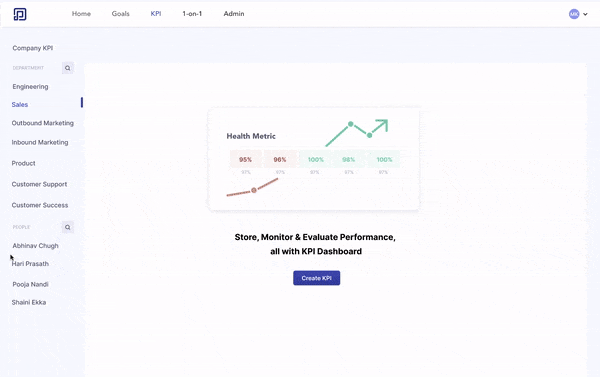
Celebrate milestones: Recognize and reward achievements along the way, keeping teams motivated and engaged in the journey.
Ignite Employee Engagement
Make OKRs personal: Encourage employees to set personal OKRs aligned with team and organizational goals, fostering a sense of ownership.
OKR Management platforms like Peoplebox allow employees to set goals within minutes. Your team can effortlessly choose the goal cycle, goal visibility, and even ensure alignment of personal goals with organizational objectives, all within the same platform.
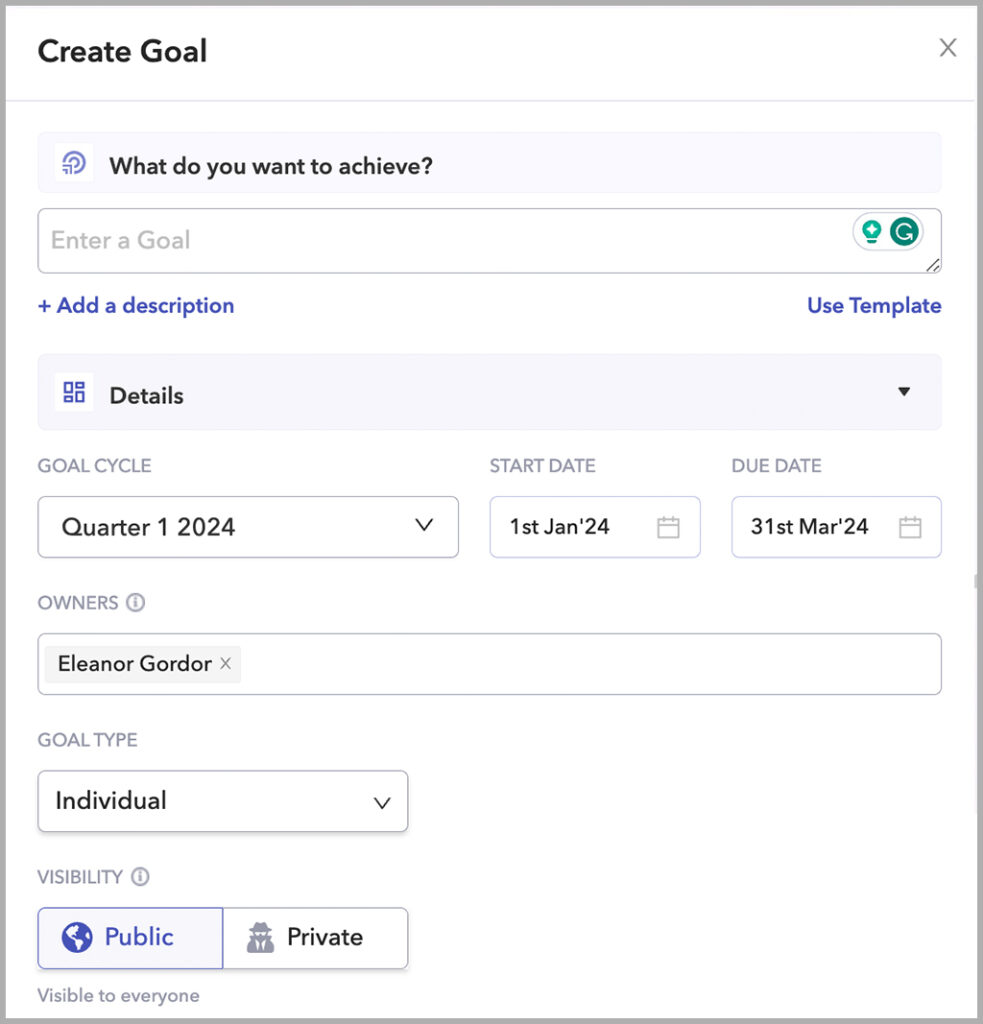
Transparency breeds trust: Create an open environment where employees can share progress, challenges, and feedback freely.
Empower ownership: Give teams the autonomy to define their key results and how they’ll achieve them, fostering creativity and engagement.
Foster a Culture of Continuous Improvement
Embrace the “growth mindset”: Encourage a culture of learning and experimentation, where setbacks are seen as opportunities for growth and improvement.
Celebrate innovation: Reward and recognize employee ideas that contribute to process optimization and improved efficiency.
Keep it fresh: Regularly review and update your OKR framework to reflect changing priorities and market dynamics. Wondering how you can run successful reviews? We’ve got the answer in our quick post on how to ace OKR reviews.
Remember, OKRs are a journey, not a destination. By implementing these tips and best practices, you can unlock the full potential of your team, drive transformative results, and propel your organization towards a future of optimized performance and success.
We understand that creating OKRs from scratch can be a daunting task. To help you, we have curated free OKR templates that you can use to kickstart your OKR journey. Happy goal setting!
Crafting and Tracking OKRs Seamlessly with Peoplebox
When it comes to setting and tracking OKRs, Peoplebox offers a user-friendly and intuitive platform that streamlines the entire process. Here’s how Peoplebox makes OKR management a seamless experience:
Seamless Alignment and Tracking
Peoplebox’s OKR Software allows teams to align and track all strategic priorities, goals, and initiatives seamlessly. By integrating with various work tools used by teams, it automates the process of aligning and tracking OKRs, eliminating the need for manual data entry and updates.

Integration with Slack and Other Apps
The software integrates with Slack and other applications, removing friction associated with using an additional tool. This integration streamlines the OKR management process and ensures that teams can access and update OKRs within their existing workflow.

Implementation Framework for OKR Adoption
Peoplebox provides an implementation framework along with next-gen OKR software, making it easier for companies to achieve OKR adoption across the organization. This framework facilitates a smooth transition to OKR management and ensures widespread acceptance and understanding of the process.
Enhanced Visibility and Understanding
Employees can gain a clear understanding of the company’s direction by viewing OKRs and their alignment across the organization. This visibility helps in fostering transparency and ensuring that every individual understands how their work contributes to the overall objectives.

Customizable Dashboards and Presentable Reports
Peoplebox enables users to create customizable and presentable dashboards with charts, KPIs, and narration. The software automatically populates OKR progress and weekly deltas through native integration with various tech tools such as Jira, MySQL, HubSpot, Google Sheets, and more.
By leveraging Peoplebox’s OKR Software, organizations can streamline the process of setting, aligning, and tracking OKRs, leading to improved transparency, alignment, and overall performance management. Ready to kickstart your OKR journey? Contact us today and discover how Peoplebox’s OKR Software can help your organization achieve its strategic goals seamlessly.

